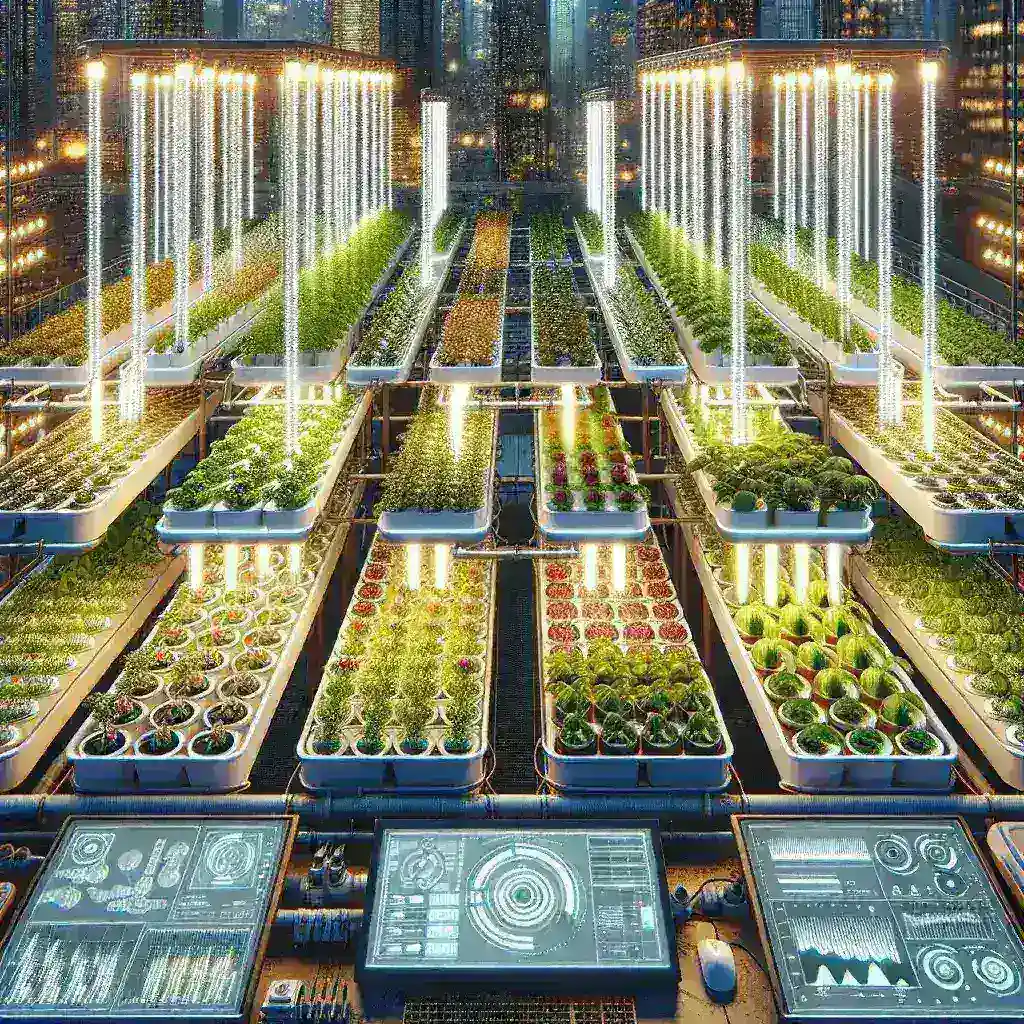Hydroponic Farming Installations Transform Urban Food Production
Introduction to Hydroponic Farming
As urban populations continue to surge, the demand for fresh, locally-sourced produce has never been higher. Hydroponic farming, a method of growing plants without soil, is transforming urban food production by providing innovative solutions that address these challenges. This article will explore how hydroponic farming installations are revolutionizing food systems in cities across the globe.
The Basics of Hydroponics
Hydroponics involves growing plants in nutrient-rich water solutions, allowing for a more controlled and efficient method of cultivation. Unlike traditional farming, hydroponics can be implemented in various environments, including rooftops, warehouses, and even basements. This adaptability makes it perfect for urban settings where space is often limited.
Key Benefits of Hydroponic Farming
- Space Efficiency: Hydroponic systems can be set up vertically, making the most of small urban spaces.
- Water Conservation: Hydroponic farming uses up to 90% less water than conventional farming.
- Pesticide Reduction: The controlled environment reduces the need for pesticides, resulting in healthier produce.
- Year-Round Production: Hydroponics enables continuous crop production, irrespective of seasonal changes.
Historical Context of Hydroponics
The concept of hydroponics dates back to ancient civilizations, but it gained significant traction in the 20th century. In the 1930s, researchers began to study the potential of growing plants in nutrient solutions, leading to the development of modern hydroponic systems. By the 1960s, hydroponics had emerged as a commercial farming method, with applications expanding rapidly in urban areas.
Evolution and Adoption in Urban Areas
Today, cities worldwide are leveraging hydroponic technology to enhance food security and sustainability. Urban farms are sprouting in unexpected places, from repurposed shipping containers to community gardens on vacant lots. This paradigm shift in food production is not just about accessibility; it’s also about reconnecting urban dwellers with the sources of their food.
The Future of Urban Hydroponics
As urban areas continue to expand, the future of hydroponic farming looks promising. Experts predict that by 2030, urban agriculture could supply up to 30% of the food consumed in cities. Technological advancements, such as AI and IoT integration, will further enhance hydroponic systems, allowing for smarter farming practices and increased yields.
Challenges and Considerations
While hydroponic farming offers numerous benefits, it is not without challenges. Initial setup costs can be high, and there is a steep learning curve associated with managing nutrient solutions and environmental conditions. Moreover, the reliance on electricity for lighting and climate control can be a concern, especially in regions with unstable power supplies.
Real-World Examples of Successful Hydroponic Installations
Several cities have embraced hydroponic farming with remarkable success:
- Urban Roots (Austin, Texas): This nonprofit organization uses hydroponics to teach youth about sustainable agriculture while providing fresh produce to local communities.
- Brooklyn Grange (New York City): Operating the world’s largest rooftop soil farm, Brooklyn Grange also incorporates hydroponic systems to maximize yield.
- Green Spirit Farms (Michigan): Utilizing vertical farming techniques, Green Spirit Farms produces a variety of greens and herbs year-round, supplying local markets.
The Cultural Relevance of Hydroponic Farming
Hydroponic farming is more than just a method of producing food; it represents a cultural shift towards sustainability and environmental consciousness. In many urban areas, it serves as a community-building initiative, empowering individuals to take control of their food sources. The movement encourages local stewardship, promoting healthful eating habits and reducing reliance on industrial agriculture.
Expert Insights on Hydroponics
Industry experts emphasize the importance of hydroponics in addressing urban food deserts. Dr. Jane Smith, an agronomist, states, “Hydroponics allows cities to reclaim their food systems, ensuring that everyone has access to fresh produce, regardless of their location. The technology is there; now it’s about scaling it effectively.”
Conclusion: The Path Ahead
Hydroponic farming installations are not just a trend; they are a vital part of the future of urban food production. They offer sustainable solutions that enhance food security, promote environmental stewardship, and foster community engagement. As technology continues to evolve and more urban areas adopt hydroponic systems, the potential for transforming cities into green, self-sufficient hubs is limitless.
Getting Started with Hydroponic Farming
For those interested in diving into hydroponics, consider the following steps:
- Research Different Systems: Explore various hydroponic systems such as nutrient film technique (NFT), deep water culture (DWC), or aeroponics to determine which best suits your space and needs.
- Start Small: Begin with a simple setup to understand the basics before scaling up.
- Join a Community: Engage with local hydroponic groups online or in-person for support and resources.
- Monitor and Adjust: Keep a close eye on your plants’ health and nutrient levels, making adjustments as necessary for optimal growth.
In conclusion, hydroponic farming installations are indeed transforming urban food production, paving the way for a sustainable future. As cities continue to innovate and adapt, the potential for hydroponics to reshape our food landscapes is more significant than ever.

